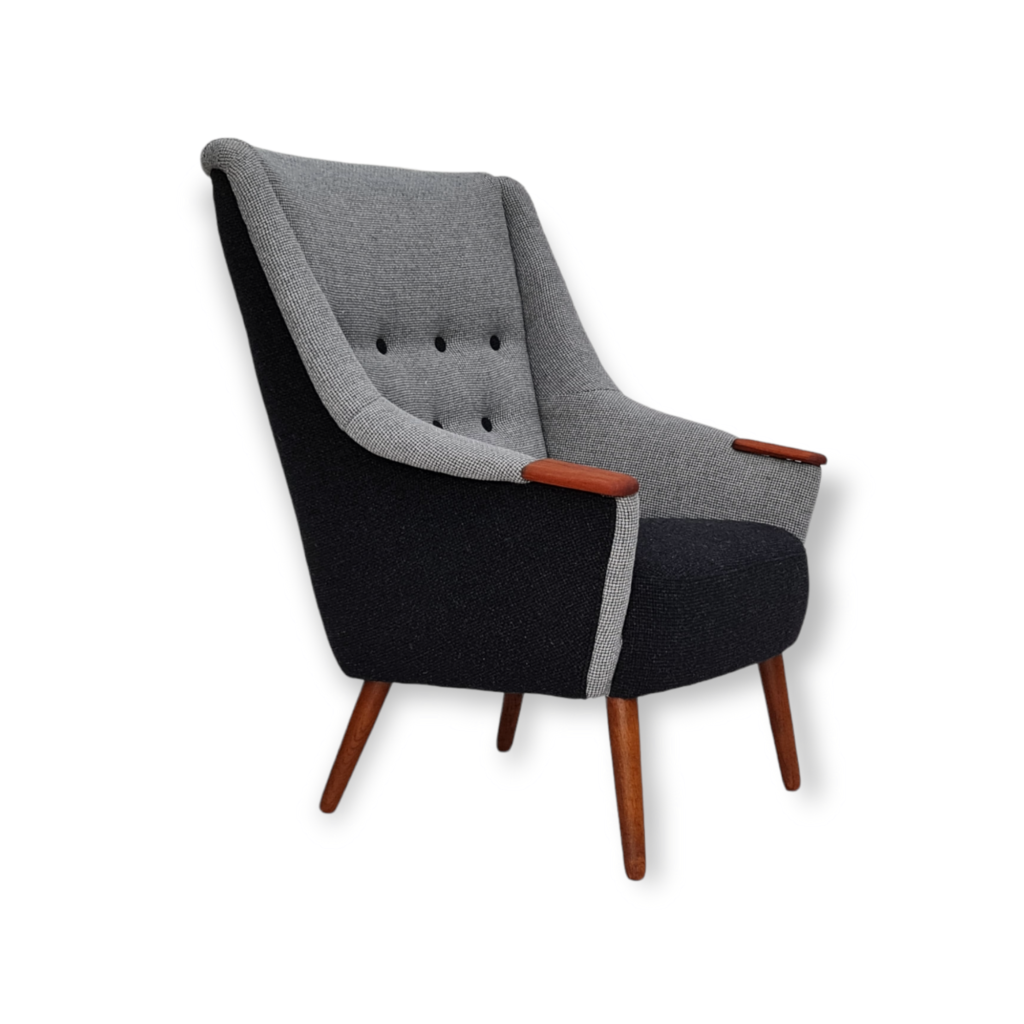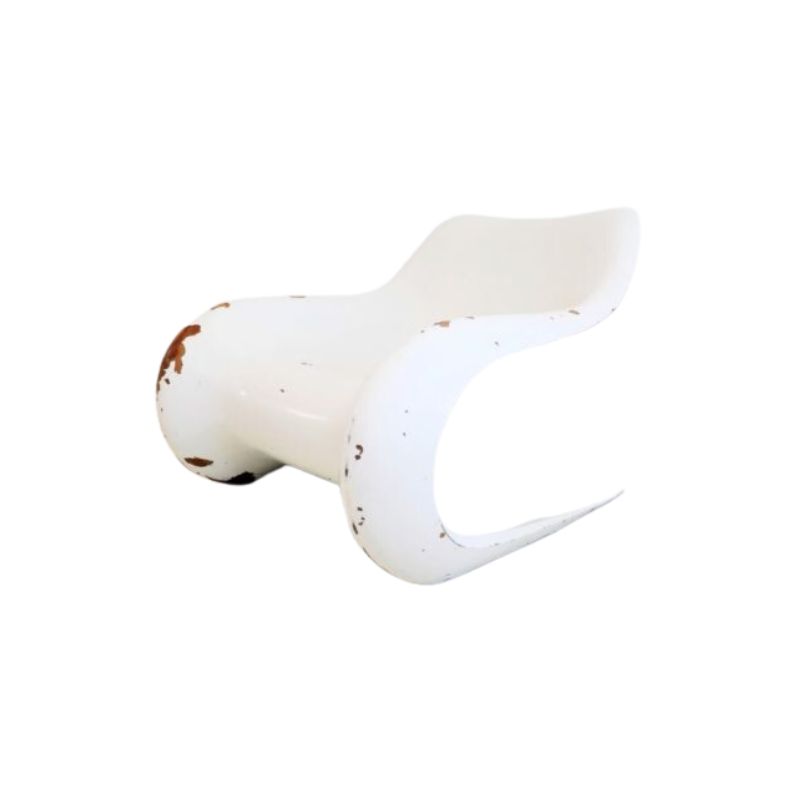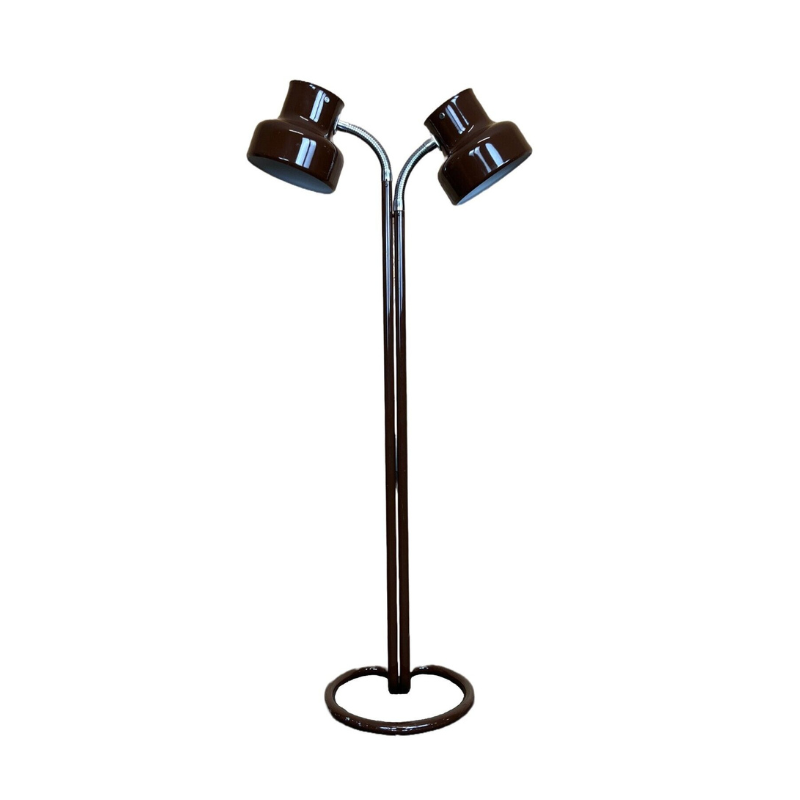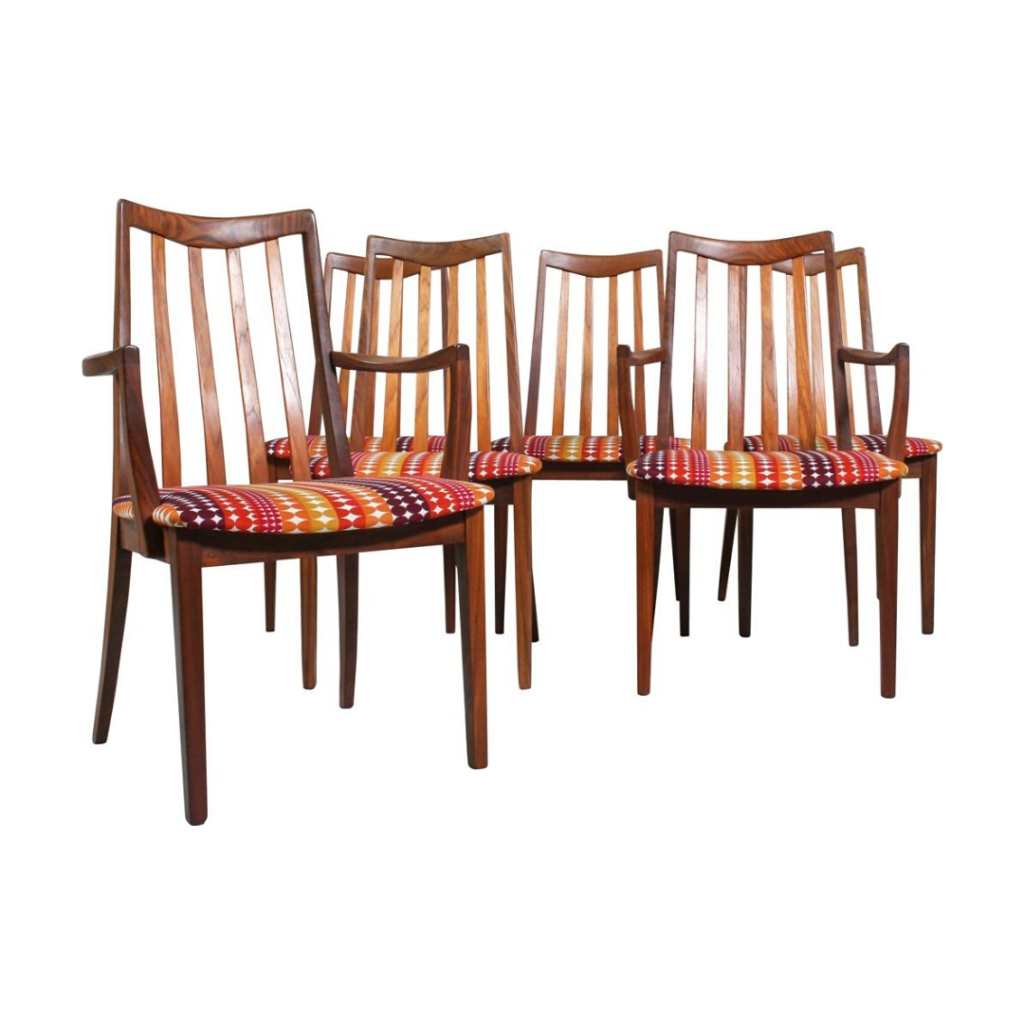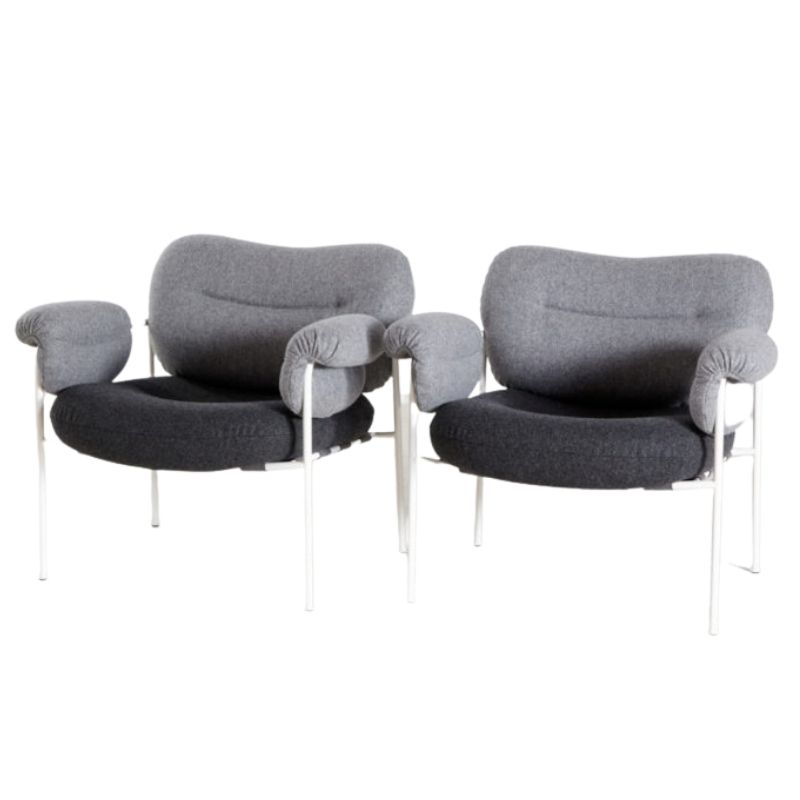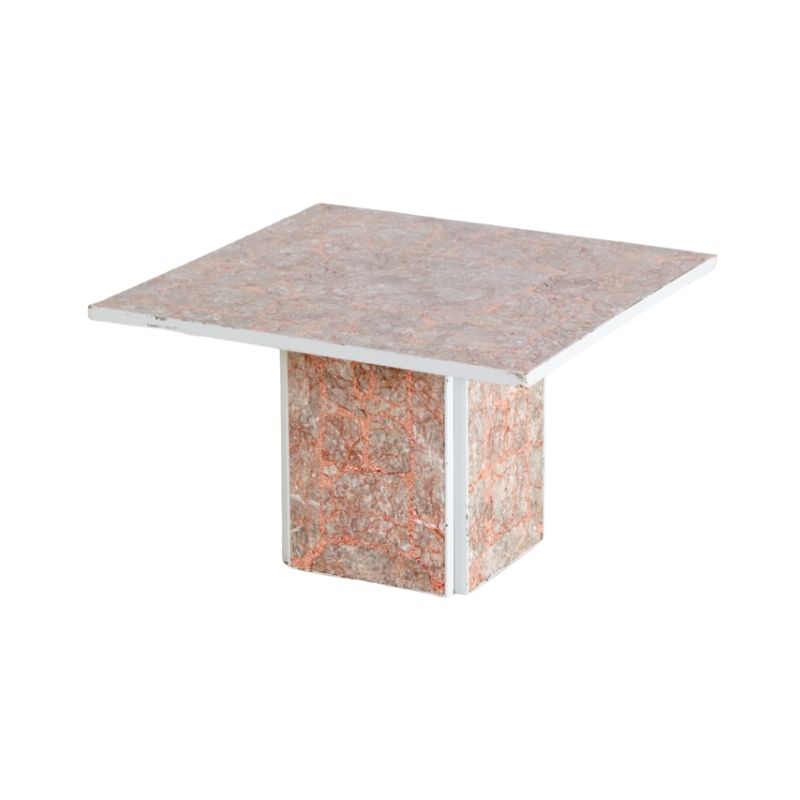To me it looks like the manufacturer was using one species of wood for veneer work and another for solid wood. I don’t think that the veneer looks like walnut or anything that is a Dalbergia or anything that is in the broader legume family. Bocote does seem plausible. Notice in the catalogs that the wood species is not identified. It is only in the press article mentioning and the wording is tightly parsed. The sentence is about the desk. Notice it is chrome and veneer, no solid wood. And they describe it as “Canaletta, a Venezuelan rosewood”, which fits nicely in the long history of marketing wood to indicate that it is probably from Venezuela (or at least bought there) and isn’t what historically was sold as rosewood. I can add that Canaletta is unlikely to be a local or native Venezuelan name for the wood because it is spelled using an Italian convention, not Spanish.
As to the solid wood it might be walnut but it might be something else that was stained. Many Don Shoemaker chairs are Bocote (often misrepresented as ‘rosewood’) and I think that if you spend some time looking at them and this it would be hard to say the two look consistent.
funny fact: Bocote smells like dill pickles when you cut it.
I do not have any experience with lacquered Bocote, but maybe this is what it wood look like. There is much less striation in most of the veneer here. That is consistent with what Bocote does as it ages over a few months to maybe a year. It evens out to brown with much more subtle striations. Oiled it is much darker than this. For example Don Shoemaker chairs are much darker, except for the very light sapwood inclusions. Lacquer tends to result in a lighter appearance just in general.
It is strange that the OP’s piece had more color variation, although maybe it had very recently been sanded?
I have very certainly been wrong before and I am open to being wrong on this too!
You're right though, veneer often can't look the same as a solid piece of wood. Veneer is cut to demonstrate elements of a timber's figure that is likely impossible to recreate in solid timber, without damaging your yield in some way.
I don't think yours looks like bocote still, one of the catalogue pictures posted above looks a little more distinctively figured and I'd be inclined to say that could be? But I don't have anywhere near enough experience with bocote - we don't get that over here in the UK much, whereas Leif has obviously seen it quite a bit. And crucially he's seen aged examples, that's a bit of a game changer.
I have very certainly been wrong before and I am open to being wrong on this too!
You're right though, veneer often can't look the same as a solid piece of wood. Veneer is cut to demonstrate elements of a timber's figure that is likely impossible to recreate in solid timber, without damaging your yield in some way.
I don't think yours looks like bocote still, one of the catalogue pictures posted above looks a little more distinctively figured and I'd be inclined to say that could be? But I don't have anywhere near enough experience with bocote - we don't get that over here in the UK much, whereas Leif has obviously seen it quite a bit. And crucially he's seen aged examples, that's a bit of a game changer.
Well I still put my money on you being more right than me as I have even less knowledge on wood types than you. Thanks so much!
To me it looks like the manufacturer was using one species of wood for veneer work and another for solid wood. I don’t think that the veneer looks like walnut or anything that is a Dalbergia or anything that is in the broader legume family. Bocote does seem plausible. Notice in the catalogs that the wood species is not identified. It is only in the press article mentioning and the wording is tightly parsed. The sentence is about the desk. Notice it is chrome and veneer, no solid wood. And they describe it as “Canaletta, a Venezuelan rosewood”, which fits nicely in the long history of marketing wood to indicate that it is probably from Venezuela (or at least bought there) and isn’t what historically was sold as rosewood. I can add that Canaletta is unlikely to be a local or native Venezuelan name for the wood because it is spelled using an Italian convention, not Spanish.
As to the solid wood it might be walnut but it might be something else that was stained. Many Don Shoemaker chairs are Bocote (often misrepresented as ‘rosewood’) and I think that if you spend some time looking at them and this it would be hard to say the two look consistent.
funny fact: Bocote smells like dill pickles when you cut it.
Your input and knowledge is much appreciated Leif! Very interesting reading your comment. Dill pickles uh? LOL
If you need any help, please contact us at – info@designaddict.com





